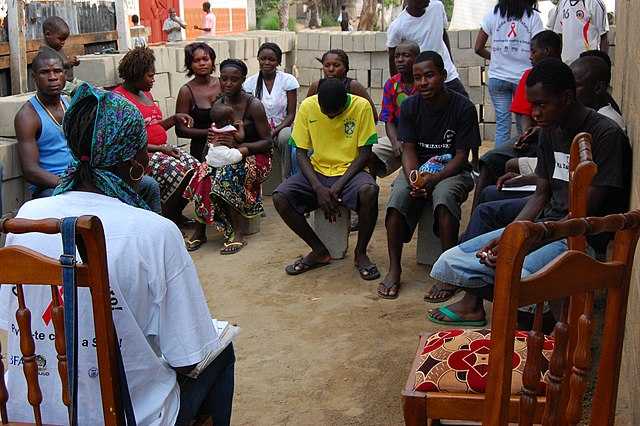
Sexual and reproductive health
State of the reproductive system without evidence of disease, disorders, or deficiencies / From Wikipedia, the free encyclopedia
Dear Wikiwand AI, let's keep it short by simply answering these key questions:
Can you list the top facts and stats about Sexual health?
Summarize this article for a 10 year old
Sexual and reproductive health (SRH)[1] is a field of research, health care, and social activism that explores the health of an individual's reproductive system and sexual well-being during all stages of their life.[2][3] [4]Sexual and reproductive health is more commonly defined as sexual and reproductive health and rights,[5] to encompass individual agency to make choices about their sexual and reproductive lives.
The term can also be further defined more broadly within the framework of the World Health Organization's (WHO) definition of health―as "a state of complete physical, mental and social well-being, and not merely the absence of disease or infirmity"―.[6] WHO has a working definition of sexual health (2006) as '“…a state of physical, emotional, mental and social well-being in relation to sexuality; it is not merely the absence of disease, dysfunction or infirmity. Sexual health requires a positive and respectful approach to sexuality and sexual relationships, as well as the possibility of having pleasurable and safe sexual experiences, free of coercion, discrimination and violence. For sexual health to be attained and maintained, the sexual rights of all persons must be respected, protected and fulfilled[7].” This includes sexual wellbeing, encompassing the ability of an individual to have responsible, satisfying and safe sex and the freedom to decide if, when and how often to do so. UN agencies in particular define sexual and reproductive health as including both physical and psychological well-being vis-à-vis sexuality.[8] Furthermore, the importance of ensuring sexual lives are pleasurable and satisfying, and not only focused on negative consequences of sex has been emphasized by many agencies such as the World Association of Sexual Health[9][10] as well as considering the positive impacts on health and well-being of safe and satisfying relationships. [11]A further interpretation includes access to sex education, access to safe, effective, affordable and acceptable methods of birth control, as well as access to appropriate health care services, as the ability of women to go safely through pregnancy and childbirth could provide couples with the best chance of having a healthy infant.
The critical Guttmacher- Lancet Commission on Sexual and reproductive health and rights states state 'Sexual and reproductive health and rights (SRHR) are essential for sustainable development because of their links to gender equality and women’s wellbeing, their impact on maternal, newborn, child, and adolescent health, and their roles in shaping future economic development and environmental sustainability. Yet progress towards fulfilling SRHR for all has been stymied because of weak political commitment, inadequate resources, persistent discrimination against women and girls, and an unwillingness to address issues related to sexuality openly and comprehensively. As a result, almost all of the 4·3 billion people of reproductive age worldwide will have inadequate sexual and reproductive health services over the course of their lives'.[12]
Individuals face inequalities in reproductive health services. Inequalities vary based on socioeconomic status, education level, age, ethnicity, religion, and resources available in their environment. Low income individuals may lack access to appropriate health services and/or knowledge of how to maintain reproductive health.[13] Additionally, many approaches involving women, families, and local communities as active stakeholders in interventions and strategies to improve reproductive health.[14]





